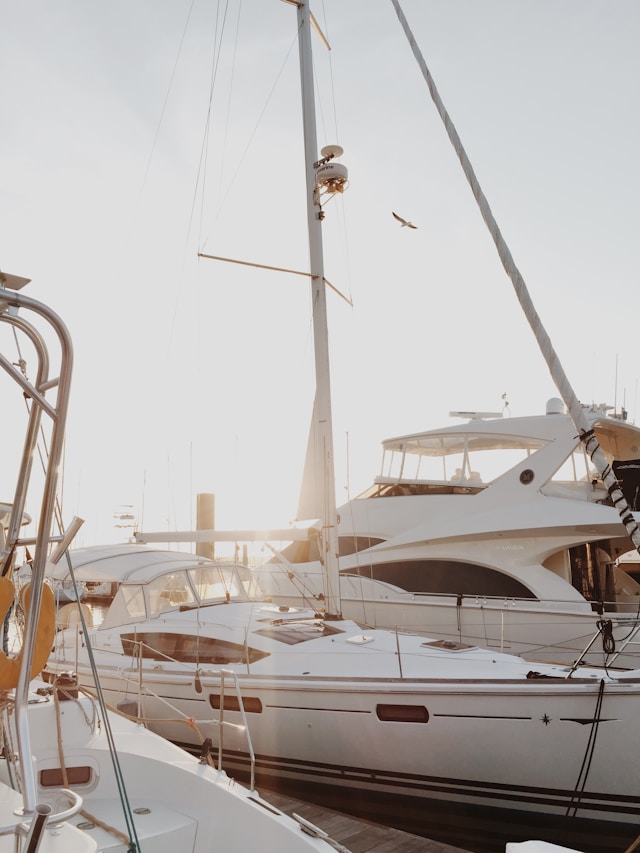If you are fortunate enough to own a superyacht, you understand that it is a significant investment that requires regular attention and meticulous care. For this unique class of vessel, standard maintenance practices simply will not suffice. In this ultimate guide, Simpson Superyachts’ guide to superyacht maintenance, we offer the best practices on how to maintain your superyacht to ensure it remains in pristine condition long after you initially set sail. This comprehensive guide covers everything from routine upkeep to specialized care, ensuring your vessel remains a pinnacle of luxury and performance.

Understanding the Fundamentals of Superyacht Maintenance
Owning a superyacht comes with the significant responsibility of keeping it well-maintained, which is essential for preserving its value and performance. This responsibility goes beyond merely ensuring the yacht is clean and visually appealing; it involves a comprehensive approach to maintenance. It includes routinely inspecting for any hidden damage that might not be immediately visible but could lead to serious issues if left unattended. Additionally, understanding the wear and tear cycles of different materials and performing regular maintenance on both electrical and mechanical systems is crucial to prevent unexpected failures and ensure the yacht operates smoothly and efficiently at all times.
Routine Inspections and Servicing
Routine inspections and servicing play a crucial role in superyacht maintenance. Regular checks for signs of rust, cracks, damage or leaks in the hull and superstructure are vital. These checks help to prevent minor issues from becoming major problems. Similar inspections should be conducted on propulsion systems, safety equipment, navigational systems, and other onboard facilities. Use a systematic approach to these checks – beginning with the exterior and working inwards.
Paint Work and Anti-fouling
Superyachts are often exposed to harsh environmental conditions such as intense UV rays, saltwater, and fluctuating temperatures, all of which can take a significant toll on the paintwork. To combat this, regular touch-ups and comprehensive repainting when necessary are crucial in protecting the exterior structure of the yacht from corrosion and degradation. Additionally, it is essential to apply anti-fouling coatings on the hull to prevent the build-up of marine organisms like barnacles and algae, which can adversely affect the vessel’s performance, speed, and fuel efficiency.
Engine and Equipment Maintenance
The engine room and mechanical equipment areas should be kept clean and free of excess moisture and salt deposits. Oiling, replacing filters, and checking for signs of wear in mechanical parts are all part of this process. Attention should be given to maintaining the generators and propulsion systems, air conditioning, water purification systems, refrigeration, and other essential equipment.
Safety Equipment Checks
Your superyacht’s safety equipment must always be in top-notch condition to ensure the well-being of all passengers and crew. This includes essential items such as life rafts, firefighting equipment, distress signal flares, life jackets, and well-stocked first aid kits. Regular and thorough checks of these items are crucial to confirm that they are functional, up to date, and ready for immediate use in case of an emergency.
Interior Maintenance

While maintaining the exterior of your yacht is crucial, the interior should not be neglected as it significantly contributes to the overall comfort and luxury of the vessel. Regular cleaning is essential to keep the living spaces inviting and hygienic, while servicing appliances ensures they function smoothly and efficiently. Additionally, consistent checks of plumbing systems, as well as maintaining upholstery and woodwork, are vital to preserve the interior’s aesthetic appeal and operational integrity, ensuring a pleasant and trouble-free experience on board.
The Role of a Qualified Superyacht Crew in Maintenance
Maintaining a superyacht is not generally a task that can be performed single-handedly. It requires a competent crew who understand the complexities and nuances of caring for such a vessel. This includes expert knowledge of various onboard systems, proficiency in spotting potential issues, understanding of the corrosion resistance of different materials used on the yacht, and dedicating adequate time to the maintenance process.
The crew also needs to prepare the yacht for different cruising seasons and must understand the effects of changing weather and sea conditions on the yacht. Professional development and training for the crew are therefore essential as part of superyacht maintenance.
Beyond DIY – The Importance of Professional Help
While some maintenance tasks can be handled by the owner or crew, professional help is beneficial when it comes to technical servicing or major maintenance tasks. Professionals have the expertise to solve complex problems and detect issues that may otherwise go unnoticed.
Closing Remarks
In conclusion, maintaining a superyacht involves regular checks, servicing, employing a professionally trained crew, and seeking professional help when needed. Failing to observe any of these steps could lead to costly repairs and significant downtime. By understanding these processes and using resources like the Simpson Superyacht maintenance guide, you can uphold your vessel’s value and ensure a safe, enjoyable cruising experience.






